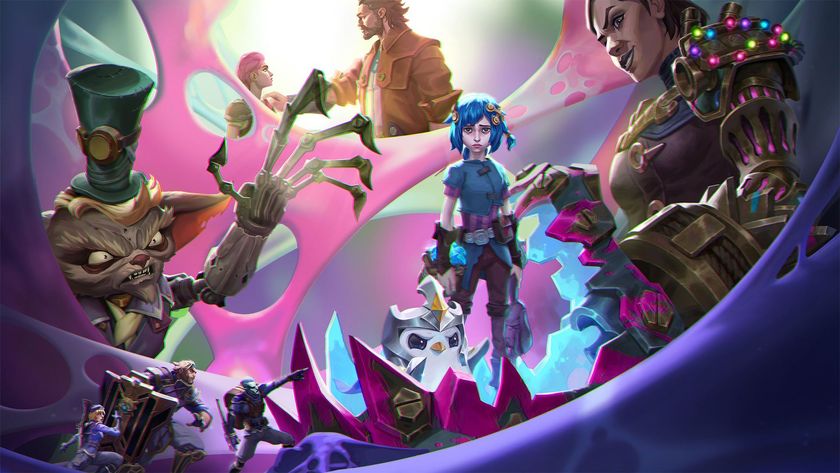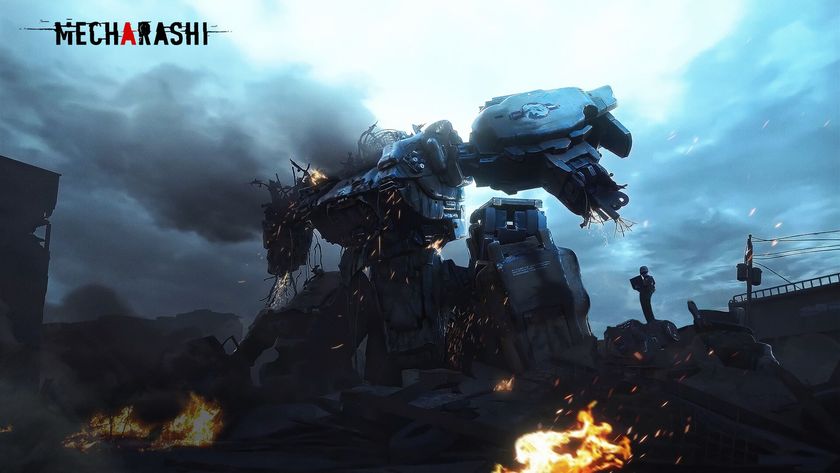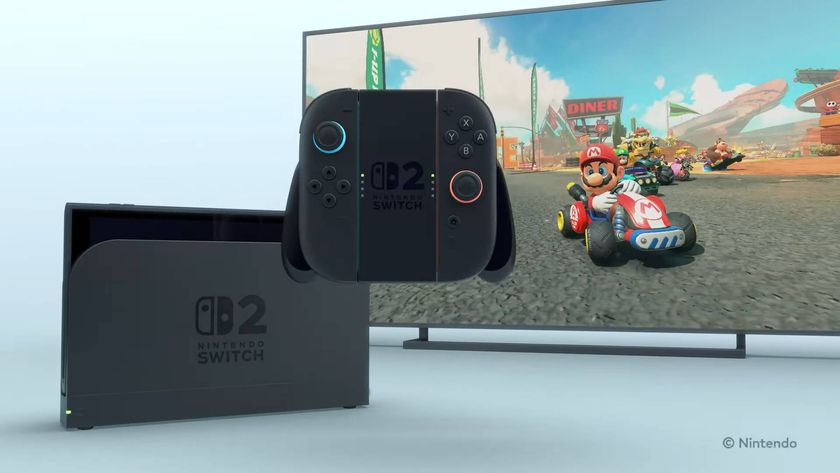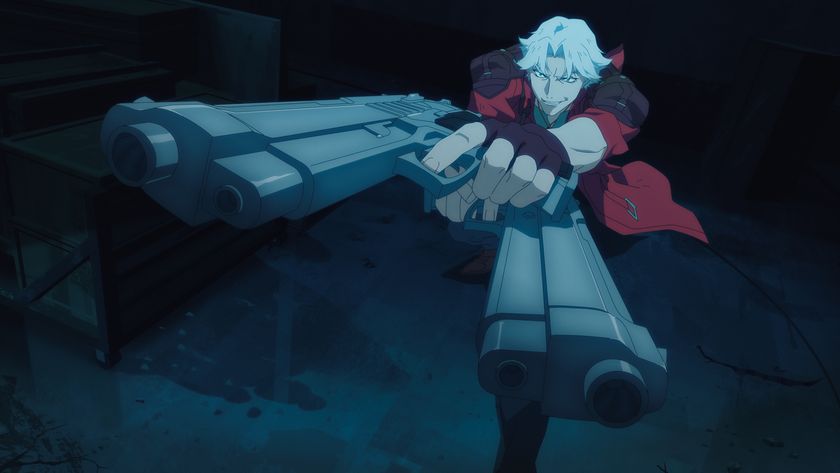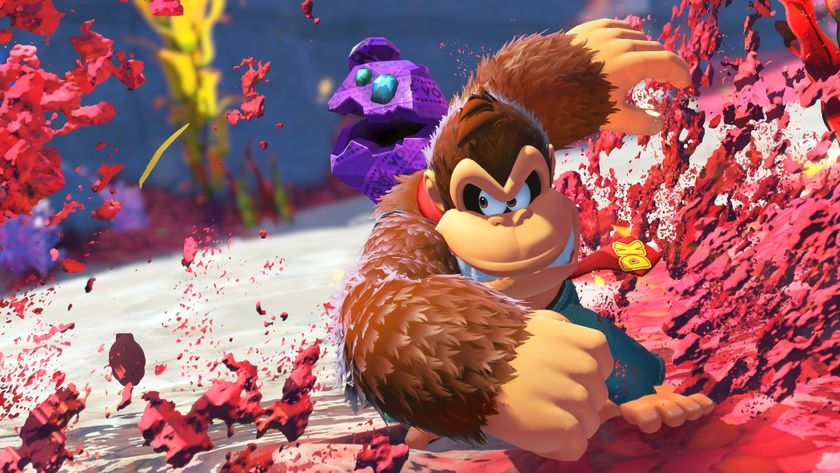23 years later, Hogs of War remains an unlikely turn-based classic from the PS1 era
Interview | From Worms to Command & Conquer, Atari and Gremlin Interactive were inspired by the best
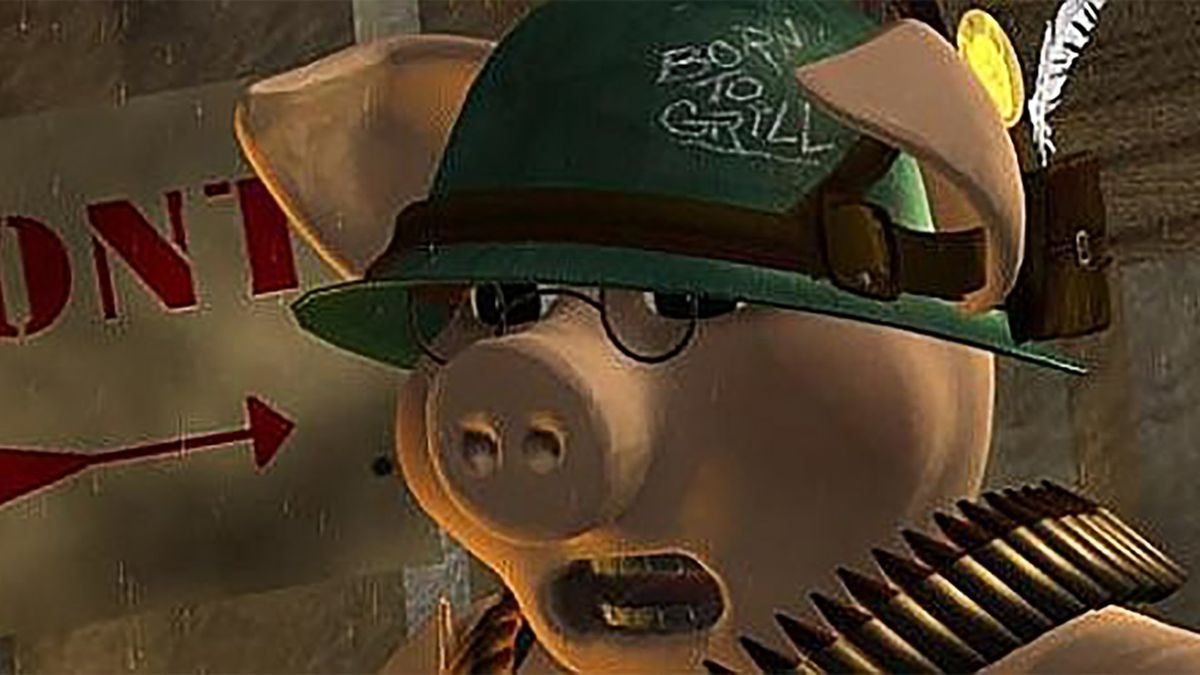
At the turn of the century, turn-based tactical warfare games featuring anthropomorphic characters were a fundamental part of PlayStation's lineup. The Worms series had found a firm footing with its first three titles: Worms, Worms 2, and Worms Armageddon.
But long before Team17 ventured into the challenging 3D realm with its flagship series, British developer Infogrames Sheffield House (previously Gremlin Games) was getting its trotters stuck into creating a brand-new IP based on similar themes, this time with pigs taking centre stage. However, as lead programmer Jacob Habgood tells us, making Hogs Of War a 3D version of a Worms-style game wasn't originally the plan. "Command & Conquer was the inspiration for Hogs originally, not Worms, as people often assume," Habgood tells Play magazine. "The Worms link really came from the team itself. We played a lot of Worms in our lunch breaks and loved it as a team-based game. So it just had an influence on the development as it progressed and Hogs took on board some of those characteristics."
But with the Worms series at the peak of its popularity and Team17 firing on all cylinders, there was concern within the Infogrames camp that they might end up late to the party.
First hog at the trough
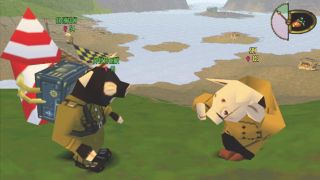

This feature first appeared in PLAY magazine - Subscribe here to save on the cover price, get exclusive covers, and have it delivered to your door or device every month.
"One of the things we were always scared of was that there would be a 3D Worms released before Hogs," says Habgood. "There was an article released halfway through development, where Team17 said that they tried it and it could be done, but Worms didn't work in 3D and they could never see it becoming a 3D game. At that point, there was this sigh of relief that at least we had a chance to be a unique product in that respect."
The 3D application worked beautifully. Although the team opted primarily to forego destructible terrain, each level was brilliantly designed, filled with obstacles, hazards, and pickups to be used to turn the tide of battle. In each turn, the player would take control of their hog in the third-person perspective and begin moving towards finding a target. Much like in Worms before it, Habgood and the team implemented a wide array of weapons suitable for a series of situations. A sniper rifle is a safe bet for doing some clean damage to a single target in the distance, but if you can get up close within the time limit, dynamite offers an opportunity to damage multiple hogs at once, or better still, launch a hog into a pool of water or minefield, causing a chain reaction of damage for the methodical planner.
Hogs Of War's format lent itself perfectly to a multiplayer game, and this will be what many players remember it for, pulling off beautiful shots against their friends and family. This would have been enough, but where the team really went above and beyond was with its singleplayer WW1-themed campaign, as players took control of any one of six different teams conquering the many continents of Saustralasia, each named something equally pig-punny like Trotsville or Bellyopolis. There was great depth to the campaign, with progression and class upgrades you could make to your roster of hogs. Furthermore, each carefully crafted scenario offered multiple strategic options, and the AI of the enemy hogs was surprisingly well developed for the era.
"One of the designers, Phil Wilson, was very into making sure the difficulty curve on those single-player missions was spot-on," Habgood explains. "We put a lot of effort into making the AI work, thinking about the progression of mechanics with all the different kinds of routes for your pigs to go through and the different weapons."
Sign up to the 12DOVE Newsletter
Weekly digests, tales from the communities you love, and more
What made playing versus the AI particularly enjoyable was the human element it seemed to display. Watching the computer team take its turn was fascinating, as you'd see AI hogs apparently demonstrate independence, stopping to pause and think about what they wanted to do next. Sometimes they would appear to be doing one thing and then change their mind at the last minute. This all went together to create an experience that, even though you were playing on your own, felt comparable to playing with friends.
When pigs fly
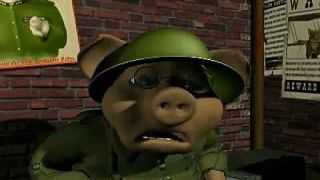
"It's a nice AI example, in terms of pathfinding with an A* algorithm to move around the map and plan attacks," Habgood says. "I can't quite remember whether it was the fact that they weren't able to make accurate predictions, or we didn't give them the ability to until they got to a particular point — there's only a certain amount of processing you can do. So, it could well have been that there was a higher-level algorithm that worked out the overall move that the AI might take, and once it got there, it was then trying to see if it had line of sight. If it didn't, that changed the weightings, and it needed to do something else instead. But it was quite good in that it would sometimes just run out of time. It was a brilliant thing for the AI to do even if it was just an illusion."
Hogs Of War had one more focus – making us laugh. It was fit to bursting with tongue-in-cheek humour. Each of the six nationalities that you could select was aping real combatants in World War 1 – so much so that we probably don't need to explain which each represented. Tommy's Trotters, Garlic Grunts, Sow-A-Krauts, Uncle Ham's Hogs, Piggystroika, and Sushi Swine were all viable options. A slight change was made for the Italian release, which swapped the Japanese team for Suini Bellici.
The ace up the sleeve of Infogrames was the use of British comedy legend Rik Mayall to perform the voices of the hogs. It's certainly dated now in the sense that these wouldn't be considered respectful representations, but at the time, in that Monty Python, Blackadder, Fawlty Towers kind of way, Rik absolutely nailed the role, and it added a huge amount to what made the game enjoyable at the time.
However, given some of his students at Sheffield Hallam University are working on a remake, Habgood wants to clarify a couple of things regarding those decisions and plans for the future. "Infogrames was a French company, and the game was released across Europe, with the voices, jokes, and dialogue localised for each territory by local teams who came from those territories. So, while there's no doubt that some of the portrayals in the game are outdated, there was a level of parity in the way that European nations were represented in the game. The same can't be said of the Japanese nation and I don't think you would include that team in a rerelease."
He continues, "I've discussed this with students quite a bit over the years and the best suggestion we've come up with is to make each team speak in the voice of its own nation (so the French pigs would speak in French and say the jokes written by French comedians, etc). That way, players would still get to hear each nation satirising itself, including Rik Mayall doing the voices of Tommy's Trotters." Habgood also explains the focus of satirising war, highlighting the futility of it as a concept more than anything else. "We weren't trying to blame any side in the war. You could play through the game as any of the different nations. I think that's very different to something like Wolfenstein where the Germans are the bad guys. I think that was one of the reasons it did well in Europe. It was number one in the German charts for six weeks – a pop song was even written about it there!"
Now more than 20 years old, Hogs Of War is a cult PlayStation classic, a naughty, creative triumph made by passionate British developers who wanted to do something different. Its humour may be dated, but its launch remains an exciting moment in gaming history. Hopefully, the remake will come to fruition, giving this charming IP another shot at world domination.
This feature first appeared in PLAY magazine - Subscribe here to save on the cover price, get exclusive covers, and have it delivered to your door or device every month.
We are Play magazine, the biggest-selling,100% independent, magazine for PlayStation gamers. Founded in 2021, it's brought to you by the same team of writers, editors, and designers as the Official PlayStation Magazine, with the same deep industry access, quality of writing, and passion for all things PlayStation. Follow us for all things PS5, PS4, and PlayStation VR.

